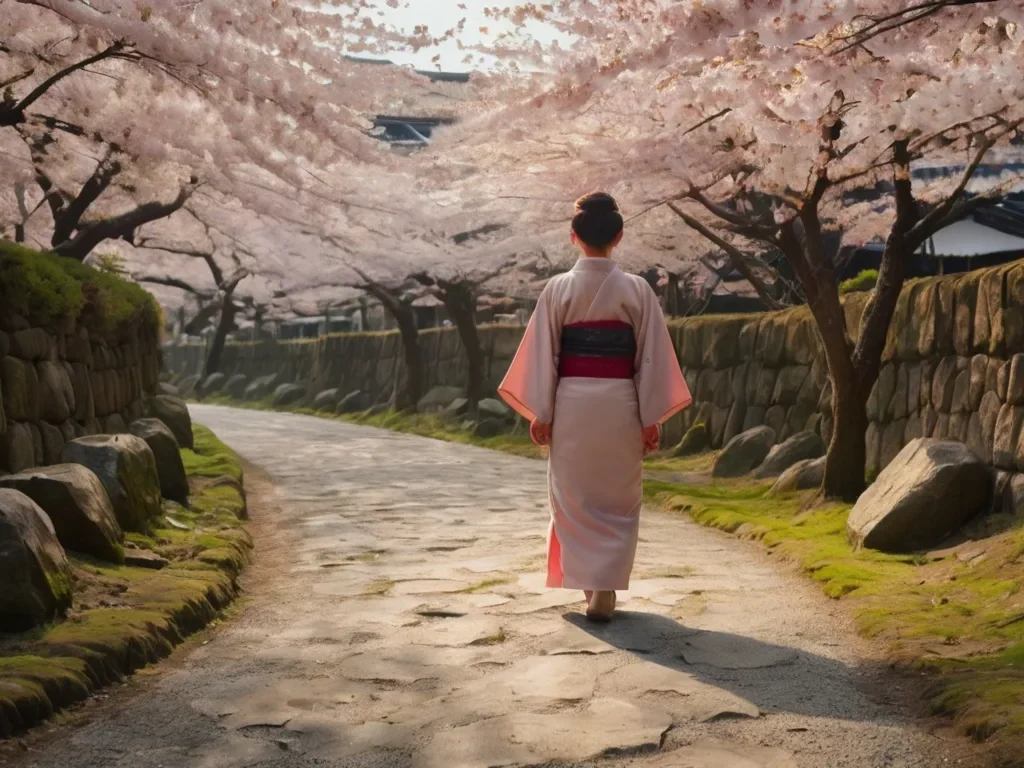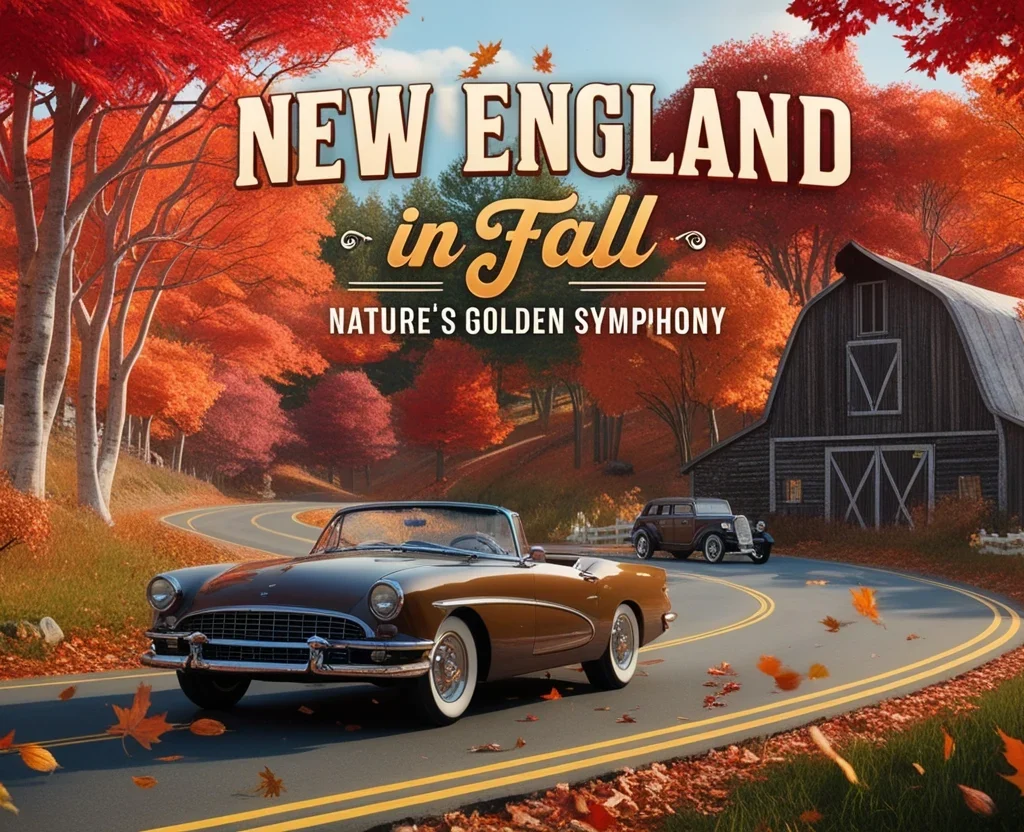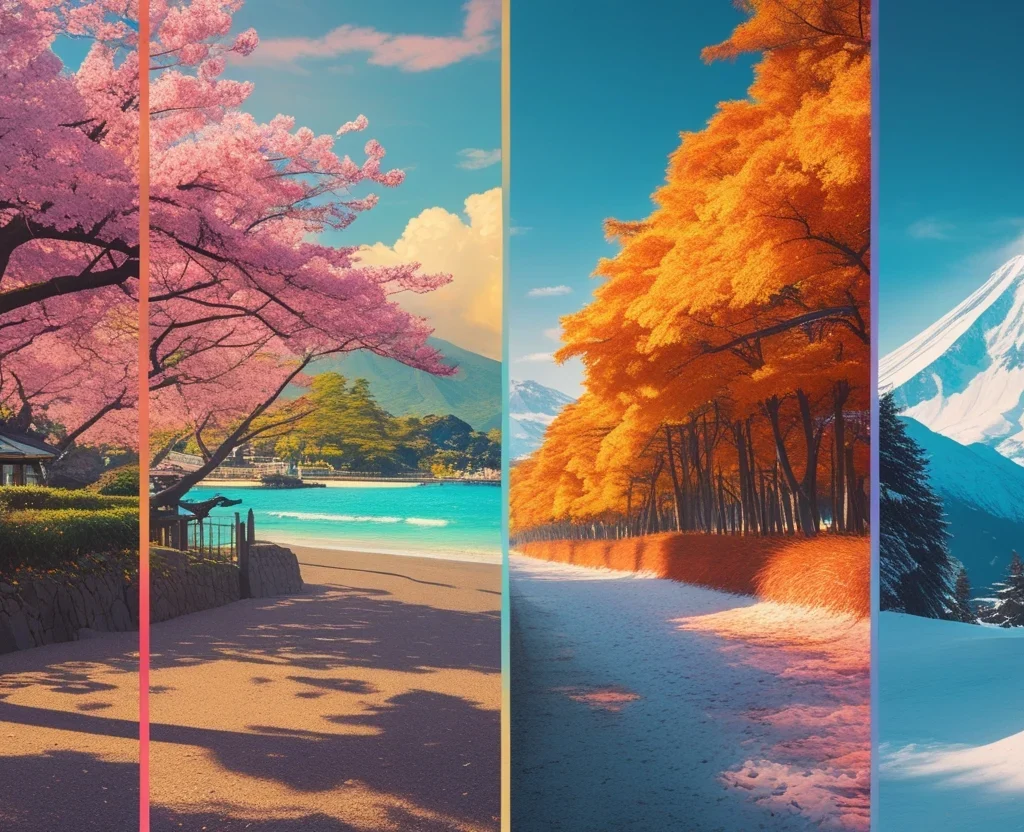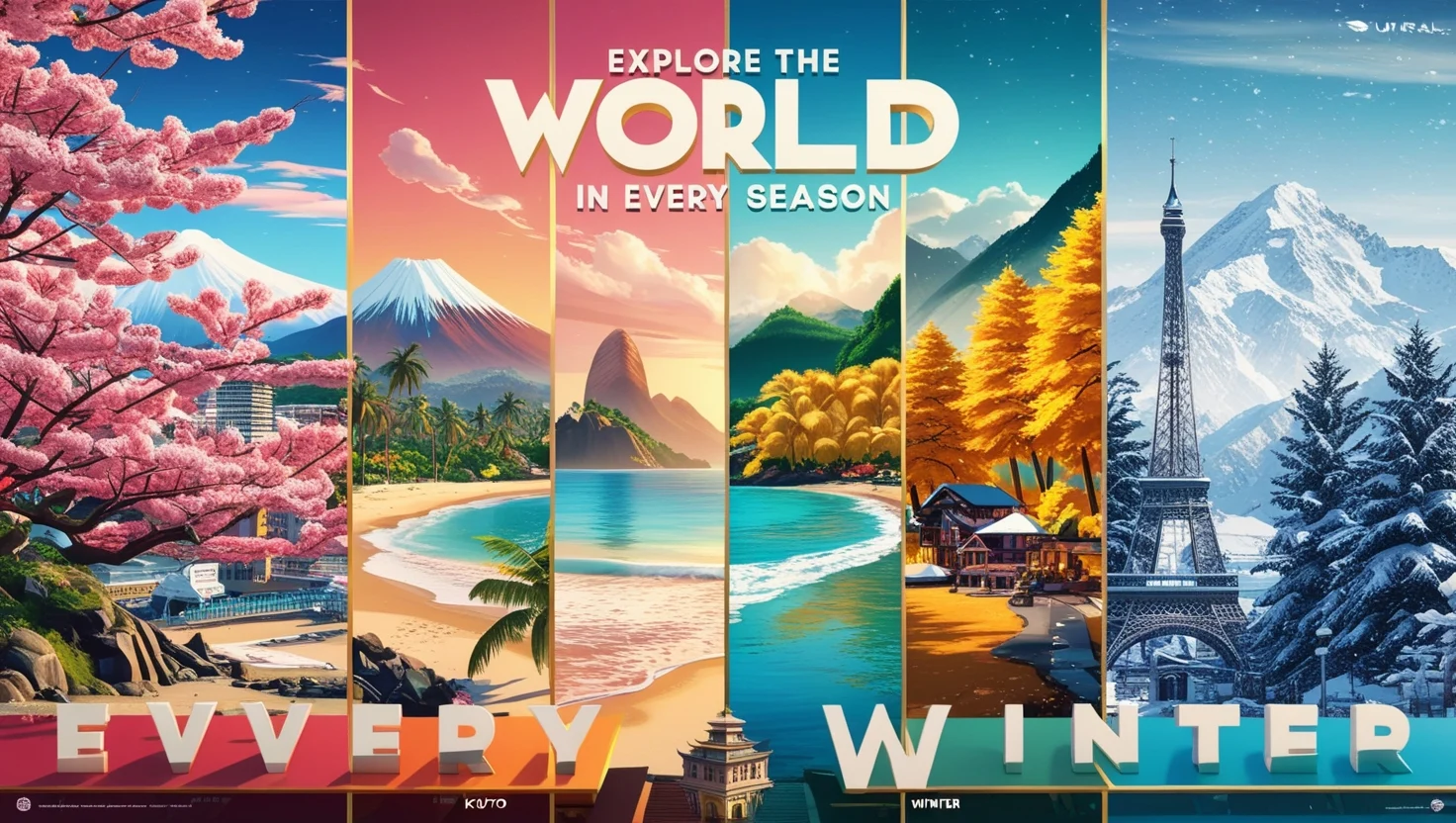Planning a leisure trip with family in 2025? Would you consider seasonal travel? Let us provide a comprehensive seasonal travel guide here.
Ever wondered why some destinations shine brightest in specific seasons? Imagine walking through streets blanketed in cherry blossoms, skiing down snow-capped peaks, or lounging on sun-kissed beaches—all made possible by timing travels with nature’s rhythms.
This seasonal travel guide unlocks the secrets to planning unforgettable journeys, blending ideal weather, vibrant cultures, and breathtaking landscapes.
What Makes Seasonal Travel Special?
Seasonal travel means visiting destinations when they’re at their most magical. Think of Japan’s cherry blossoms in spring or Switzerland’s snowy Alps in winter.
By aligning trips with a location’s peak season, travelers witness unique festivals, optimal weather, and landscapes transformed by nature’s touch. Unlike off-season travel, this approach ensures every moment is vibrant and alive.
What Makes Seasonal Travel Unique?
Seasonal travel means visiting a destination when it’s at its peak—whether that’s weather, scenery, or cultural events. Think of it as syncing your itinerary with nature’s calendar:

- Spring brings cherry blossoms in Japan and tulip festivals in the Netherlands.
- Summer offers sun-soaked beaches in Thailand and alpine hikes in Canada.
- Autumn dazzles with fiery foliage in New England and Oktoberfest in Germany.
- Winter transforms Lapland into a snowy playground and European cities into festive wonderlands.
By timing your trip right, you’ll experience destinations in their most vibrant, authentic form.
Why Follow a Seasonal Travel Guide?
Choosing the right season elevates a trip from ordinary to extraordinary. For instance, Kashmir’s lush valleys bloom in summer, while winter drapes its towns in snowy serenity.
Similarly, Europe buzzes with energy in summer but glows with cosy charm during Christmas markets. Seasonal travel isn’t just about weather—it’s about syncing with a destination’s heartbeat.
Why Seasonal Travel Beats Off-Season Adventures
- Unmatched Experiences:
- Kashmir’s valleys burst with apple blossoms in summer but turn into a frosty paradise in winter.
- Bali’s waterfalls roar during monsoon, while its beaches glow in the dry season.
- Fewer Crowds, Better Vibes:
- Avoid summer tourist surges in Europe by visiting in autumn for wine harvests and quiet trails.
- Ski the Swiss Alps in early winter (November) before peak holiday crowds arrive.
- Cost Efficiency:
- Book Greece’s Santorini in late spring (May) for lower prices and warm weather.
- Save on flights to Australia by traveling during its shoulder season (April–May).
How Seasons Shape Global Destinations
Seasons don’t just change temperatures; they redefine experiences. Winter invites skiers to icy slopes, spring lures flower enthusiasts to blooming gardens, and autumn dazzles with fiery foliage.
Yet, travelers must consider crowds and costs: European summers bustle with tourists, while monsoon rains quiet tropical escapes. Understanding these patterns helps avoid pitfalls and maximise joy.
How Seasons Redefine Global Destinations
Seasons don’t just change the weather—they reshape cultures, landscapes, and activities:
Winter (December–February)

- Northern Lights: Chase auroras in Iceland or Lapland under polar night skies.
- Festive Magic: Explore Vienna’s Christmas markets or Japan’s Sapporo Snow Festival.
- Ski Adventures: Hit the slopes in Whistler (Canada) or Zermatt (Switzerland).
Spring (March–May)
- Floral Spectacles: Walk Kyoto’s Philosopher’s Path or Washington D.C.’s National Cherry Blossom Festival.
- Mild Weather: Hike Jordan’s Petra or Morocco’s Atlas Mountains without scorching heat.
Summer (June–August)
- Beach Escapes: Swim in Thailand’s Phi Phi Islands or Croatia’s Adriatic Coast.
- Midnight Sun: Experience 24-hour daylight in Norway’s Lofoten Islands.
Autumn (September–November)
- Fall Foliage: Drive Vermont’s Route 100 or Japan’s Alpine Route for crimson landscapes.
- Cultural Festivals: Join Munich’s Oktoberfest or India’s Diwali celebrations.
Journeying Through the Year: A Seasonal Breakdown
Spring (March–May): Nature’s Rebirth
Spring breathes life into dormant landscapes. Destinations like Kyoto, Japan, burst with cherry blossoms, while Amsterdam’s Keukenhof Gardens dazzle with tulip carpets. Paris emerges from winter with outdoor cafés and blooming parks—a perfect blend of mild weather and cultural vibrancy.
Summer (June–August): Adventure Under the Sun
Summer’s long days are ideal for beach escapes and outdoor thrills. Bali’s tropical beaches and Thailand’s lively night markets thrive under the sun. Italy’s historic cities—Rome, Venice, Florence—offer art, history, and gelato under clear blue skies.

Autumn (September–November): A Canvas of Warm Hues
Autumn paints landscapes in gold and crimson. New England’s forests become a leaf-peeper’s paradise, while Bavaria, Germany, hosts Oktoberfest amid alpine vistas. Kyoto revisits its charm as maple leaves ignite in fiery reds, offering quieter, crowd-free exploration.
Winter (December–February): Frosty Magic
Winter transforms destinations into snowy wonderlands. The Swiss Alps beckon skiers, while Lapland’s Northern Lights and Santa Claus Village enchant families. European Christmas markets in cities like Vienna and Prague radiate festive cheer, blending tradition with twinkling lights.
Hemispheric Secrets: Chasing Seasons Year-Round

Here’s a trick savvy travelers use: when the Northern Hemisphere shivers in winter, the Southern Hemisphere basks in summer. Swap December snow in New York for sunny beaches in Australia or South Africa.
This flip allows endless summer—or double winters—for those mastering seasonal travel timing.
Hemispheric Hacks: Double Your Travel Calendar
Seasons flip between hemispheres—use this to your advantage:
- Chase Endless Summer:
- June: Surf in California.
- December: Sunbathe in Australia’s Gold Coast.
- Two Winters in One Year:
- January: Ski in Canada.
- July: Hit the slopes in New Zealand.
Pro Tip: Use flight comparison tools to track off-peak deals for Southern Hemisphere destinations.

Top Seasonal Destinations for 2025
🌸 Spring (March–May)
- Kyoto, Japan: Cherry blossoms frame temples like Kinkaku-ji.
- Amsterdam, Netherlands: Keukenhof Gardens bloom with 7 million tulips.
- Canadian Rockies: Thawing lakes reflect snow-capped peaks.
☀️ Summer (June–August)
- Santorini, Greece: Cliffside villages and sunset cruises.
- Banff National Park, Canada: Emerald lakes and wildlife spotting.
- Serengeti, Tanzania: Witness the Great Migration.
🍂 Autumn (September–November)
- New England, USA: Leaf-peeping drives through Vermont and Maine.
- Bavaria, Germany: Oktoberfest beers with Alpine views.
- Kyushu, Japan: Autumn festivals and hot springs.
❄️ Winter (December–February)
- Rovaniemi, Finland: Meet Santa and sledge under the Northern Lights.
- Quebec City, Canada: Ice hotels and Carnaval de Québec.
- Queenstown, New Zealand: Ski the Remarkables in July (Southern Hemisphere winter).

5 Pro Tips for Mastering Seasonal Travel
- Track Weather Patterns:
- Use apps like AccuWeather to monitor monsoons or heat waves.
- Book Early, Save More:
- Reserve Japan’s ryokans 8–10 months ahead for the cherry blossom season.
- Pack Like a Local:
- Winter: Thermal layers + waterproof boots for Iceland.
- Summer: Reef-safe sunscreen for Australia’s Great Barrier Reef.
- Dodge Crowds:
- Visit Italy’s Amalfi Coast in late September for empty beaches.
- Stay Eco-Conscious:
- Avoid overtourism by exploring alternatives (e.g., Georgia’s Caucasus Mountains instead of the Swiss Alps).
Climate Change & Seasonal Travel: What to Know
Global warming is shifting traditional seasons:
- Unpredictable Blooms: Japan’s cherry blossoms now peak earlier (late March vs. April).
- Shorter Winters: European ski resorts now rely on artificial snow.
- Monsoon Shifts: Southeast Asia’s rains start later, extending beach seasons.
Travel Mindfully: Support eco-friendly lodges and carbon-offset programs.
Budgeting for Seasonal Trips
- High Season: Expect 30–50% price hikes for flights/hotels (e.g., Europe in July).
- Shoulder Season: Save 20% by visiting Greece in May or New Zealand in April.
- Low Season: Snag deals in tropical regions during monsoons (e.g., Bali in January).

Key Takeaways
- Spring = Blooms, mild weather, cultural rebirth.
- Summer = Adventure, beaches, festivals.
- Autumn = Foliage, harvests, quiet trails.
- Winter = Snow sports, cosy vibes, Northern Lights.
By embracing seasonal travel, you’ll unlock hidden beauty, avoid crowds, and create stories worth sharing.
Final Tip: Always cross-check local events and weather alerts before finalising plans. The world’s wonders wait—no matter the season!
Smart Tips for Seasonal Explorers
- Research Wisely: Check local festivals and weather trends. Monsoon rains might dampen beaches but boost waterfall hikes.
- Book Early: Secure flights and hotels for peak seasons like Europe’s Christmas markets or Japan’s cherry blossom period.
- Pack Strategically: Match luggage to the season—sunscreen for Bali, thermal layers for Lapland.
- Stay Flexible: Weather can surprise. Keep backup plans, like museum visits for rainy days.

Final Thoughts
Seasonal travel isn’t just a trend—it’s a timeless way to connect with the world’s rhythms. While climate shifts pose challenges, mindful planning ensures unforgettable adventures. By respecting nature and embracing its cycles, travelers protect these wonders for future generations. So, grab a calendar, pick a season, and let the Earth’s beauty guide your next journey.
Note: All references to destinations are for informational purposes. Travelers should verify local guidelines and weather conditions before planning trips.
Disclaimer: All trademarks, logos, and brand names are the property of their respective owners. All company, product, and service names used in this website are for identification purposes only. Use of these names, trademarks, and brands does not imply endorsement.
FAQs
What is the best season to visit Japan for cherry blossoms?
Spring (March to April) is ideal for Japan’s cherry blossoms. Kyoto’s Philosopher’s Path and Tokyo’s Ueno Park burst into pink blooms. Pro tip: Check Japan Meteorological Corporation’s annual forecast to time your trip perfectly.
How can travelers avoid crowds in Europe during summer?
Visit lesser-known spots like Slovenia’s Lake Bled or Croatia’s Istria Coast instead of Paris or Rome. Travel in early June or late August for thinner crowds and cooler weather.
Is Bali worth visiting during the monsoon season?
Yes! Bali’s monsoon (November–March) brings lush greenery and fewer tourists. Surfers love the waves, and Ubud’s rice terraces glow emerald. Just pack a rain jacket.
Which destinations offer winter travel without extreme cold?
Try Australia’s Gold Coast (June–August) for sunny winters or Morocco’s Sahara Desert (December–February) for cool nights and warm days.
How do seasons flip between hemispheres for travel planning?
When it’s summer in the Northern Hemisphere (June–August), the Southern Hemisphere (Australia, New Zealand) experiences winter. Use this to chase endless summers or double winters!
What are budget-friendly seasonal travel hacks?
Book shoulder seasons (April–May or September–October) for lower prices. Example: Greece’s Santorini costs 30% less in May than in July, with similar weather.
Can autumn foliage be seen outside New England?
Absolutely! Japan’s Kyoto, Germany’s Black Forest, and Canada’s Algonquin Park offer stunning fall colours. New England is iconic, but alternatives exist.
What winter festivals are unique to Europe?
Don’t miss Germany’s Christmas markets (Nuremberg), Finland’s Northern Lights festivals (Lapland), or Austria’s Vienna Ball Season. Each blends culture, food, and snowy charm.
How does climate change affect seasonal travel planning?
Unpredictable blooms (earlier cherry blossoms) and shorter winters (Swiss Alps’ artificial snow) are common. Always check recent travel blogs and weather apps before booking.
What are eco-friendly tips for seasonal travelers?
Support eco-lodges, avoid plastic, and choose trains over flights for short trips. Example: Explore Norway’s fjords via electric ferries instead of cruise ships.
Which summer destinations are best for adventure lovers?
Banff National Park (Canada) for hiking, Bali’s Mount Batur for sunrise treks, and Costa Rica’s Arenal Volcano for zip-lining. Summer amps up outdoor thrills!
Are there tropical destinations safe from monsoons in July?
Yes! Hawaii (USA) and Zanzibar (Tanzania) have dry, sunny weather in July. Avoid Southeast Asia (Thailand, Bali) during peak monsoon months.
How early should you book for peak seasons like Kyoto’s spring?
Book flights and hotels 8–10 months ahead for Kyoto’s cherry blossom season. Ryokans (traditional inns) sell out fastest!
What are the best winter destinations for families?
Lapland (Finland) for Santa Village, Quebec City (Canada) for ice hotels, and Tokyo (Japan) for Disneyland’s festive decor. Kids love snowy activities!
Can you experience autumn and spring in one trip?
Yes! Visit New Zealand in April: enjoy autumn foliage in Queenstown and spring blossoms in Christchurch. Hemispheric flips make it possible.
Discover more from Traveler Swapnamay
Subscribe to get the latest posts sent to your email.








